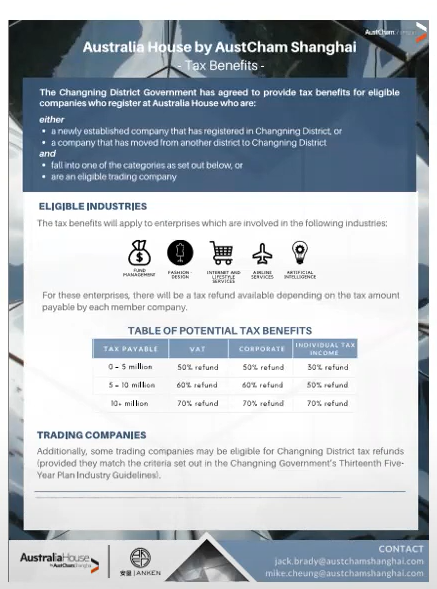Budgeting for China
Why is it important to create a budget for your China Business?
Budgets can be seen as imposing constraints that are hard to live with and
establishing goals that are hard to meet.
- For most people that aren’t numbers person, the one thing they’re going to procrastinate on is their numbers because for them they feel that if they’re a salesperson well the budget will create imposing constraints and will impose very high target and goals that achievable. Well, we want goals, we want high targets to be achievable because we’re going into the biggest market in the world which is China where there is tremendous opportunity to your business. So, we should be having high targets and we should get excited by those targets that are being set. We should not consider budgets as constraints and should consider budgets as guidelines to making sure that we are growing in the right way that we are not losing time because traditionally most foreign investors they will move two steps forward in China and sometimes five steps backward because of roadblocks and obstacles that go in their path
Benefits of budgeting for your China operation
- Gives you control over your registered capital
- Keeps you focused on your investment goals
- Makes you aware what is going on with your money
- Helps you organize your spending
- Makes you decide in advance how your money will work for you
- Enables you to save for expected and unexpected costs
- Enables you to communicate with your investors about money
- Provides you with an early warning for potential problems
- Helps you determine if you can take debt and how much
- Enables you to produce extra money
Where to Begin:
- What are the projected sales for the budgeted period?
Careful: if you overestimate, it will cause you problems in the future - What are the direct costs of sales?
Example: cost of materials, components or sub-contractors to make the product or service - What are the fixed costs or overheads?
Projected revenues/sales
Revenues – sales or revenue forecasts are typically based on a combination of
- Sales history
- How effective you expect your future efforts to be
Using your sales and expenditures forecasts, you can prepare projected profits for the next 12 months. This will enable you to analyze your margins and other key ratios such as return on investment.
Projected Costs
Costs – typically, your business will have 3 kinds of costs:
- Fixed costs – items such as rent, salaries and financing costs
- Variable costs – including raw materials and overtime
- One-off capital costs – purchases of computer equipment or premises, for example
To forecast your cost, contact your suppliers
Fixed costs and overheads should be broken down as follows:
- Cost of premises, including rent, municipal taxes and service charges
- Staff costs – wages, social insurance, allowances
- Utilities – electricity, telephone, broadband
- Printing, postage and stationery
- Vehicle expenses
- Equipment costs
- Advertising and promotion
- Travel and subsistence expenses
- Legal and professional costs, including insurance, legal fees, accounting fees, etc.
Projected Cash Flow
Projected cash flow – your cash budget projects your future cash position on a month-by-month basis. Budgeting in this way is vital for small businesses as it can pinpoint any difficulties your might be having. It should be reviewed at least monthly.
- What has to be paid when?
- Use your budget against your business plan to create a financial action plan
- Benchmarking your performance year-on-year
- Key performance indicators – monitor the ‘’drivers’’ of your business (sales, costs and working capital)
Any trends towards cash flow problems or falling profitability will show up in these figures when measured against your budgets and forecasts. They can help you spot problems early on if they are calculated on a consistent basis.
Representative Office versus Limited Liability Company
- A Representative office (RO) has no registered capital requirement and instead generally pays taxes on its expenses (approximately 10% on expenses). This is a general calculation as there are formulas which must be applied to calculate the taxes for the RO. The reason a RO pays taxes is because it indirectly contributes to the revenue potential of its parent. If the Chinese tax authorities decided that an RO is generating revenue from outside its intended activities, they can levy a tax on its deemed revenues and income.
- A LLC, on the other hand, is required to make an initial capitalization, which is tax free, but is expected to pay taxes on both its revenues and profit. If a Chinese entity’s expenditures exceed a certain threshold, a LLC is, in fact, more tax efficient that the RO.
What is registered capital?
- There are two numbers which need to be provided to the CoC:
The total investment amount and the registered capital amount. - The total investment reflects the total capital required to develop and run the company.
- The registered capital which is the capital amount used to start-up the business until the company has a positive cash-flow status.
- There are no minimum capital requirements in China.
- It is important for each company to calculate their projected budget and cash flow needs.
- You should invest sufficient funds to sustain the Company until you expect it to be cash flow positive.
- Too many investors spend too much time finding ways to minimize their capital investments, only to find out that business expenses are greater than the anticipated.
- Operating in China is not cheap; office rent, and renumeration of experienced employees can rival that of any developed country.
Action plan to calculate your registered capital
- The CoC and the tax bureau ‘’like’’ to see companies that have registered capital’s of more than RMB 1,000,000.
- Remember: no business plan is required to be seen by any government bureau.
- Calculate how much capital you need during your start-up phase (3-5 year projection) and make this your registered capital (if this makes sense for you and your company)
What happens if you do not have enough capital to fund your China company?
So, when you are investing, I’m throwing a number out there let’s say you bought 1 million RMB, you’re obviously going to inject a certain portion of that because you need it from day one to pay off your expenses, but it doesn’t mean you need the full 1 million RMB. There are ways of bringing capital in if you run out but you also have a time limit on when that capital can be injected. So, for example, if you decide that the term of validity for your company is going to be 10 years which is the minimum, you have 10 years to inject that 1 million RMB. Your registered capital is also your liability within the organization.
If you run out of registered capital, you have 3 options.
Options if you did not calculate the registered capital properly
- Use the difference between the registered capital and the total investment – called your foreign debt loan
- Increase your registered capital amount
- Create a service agreement to receive funds from the shareholding company
When does the capital have to be injected by?
What is your term of validity?
- Minimum of 10 years
- Maximum of 50 years
These action plans set you up for GROWTH IN CHINA
Check that your actual numbers match your budget along your China journey
Your actual income – each month compare your actual income with your sales budget
- Analyze the reasons for any shortfall – for example, lower sales volume, flat markets, underperforming services or products
- Considering the reason for a particularly high turnover – for example, whether your targets were too low
- Comparing the timing for your income with your projects and checking that they fit
Analyzing these variations will help you to set future budgets more accurately and also allow you to take action where needed.
Your actual expenditure – regularly review your actual expenditure against your budget. This will allow you to predict future costs with better reliability. It is recommended to:
- Look at how your fixed costs differed from your budget
- Check that your variable costs were in line with your budget – normally variable costs adjust in line with your sales volume
- Analyze any reason for changes in the relationship between costs and turnover
- Analyze the differences in the timing of your expenditure, for example, by checking supplier’s payment terms
Don’t rush yourself
- Your business budget isn’t something you can haphazardly throw together in a few hours.
- To do it right, you’ll need to take the time to partner with your management team and align the budget with the business strategy – even if it takes longer than you like!
Be conservative
- Enthusiasm is great but not when results disappoint.
- When in doubt, it is good idea to be more conservative and leave some ‘’slack’’ and ‘’wiggle room’’ in your projections and within your budget in case sales goals are not reached or are delayed, for example.
Start early
- Fiscal year in China is January to December
- Business should begin the annual budgeting process by October of each year (following a fiscal year in China of January to December) to allow sufficient time ton ensure the best detailed estimate is completed by the year-end.
Monitor, Evaluate and Reforecast
- Once you complete the budgeting process, the biggest mistake you could make is to file it away only to pull it out again at the end of the following year.
- A budget should be monitored on a monthly basis, or sometimes even on weekly basis for smaller companies
- Budgets should be edited if circumstances change. Furthermore, budgets should always be compared to actual results to understand why there are differences. This will help monitor spending throughout the year and help management to make key decisions in relation to the business.
For any information on how to draft your budget for the Chinese operations, please contact our team by email at info@opkofinance.com or by phone at +852 2654 8800/+86 187 177 31958








